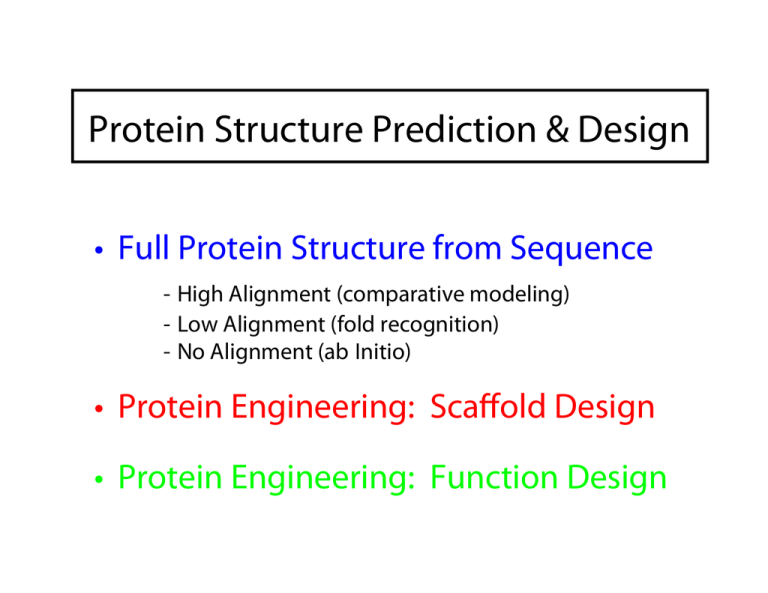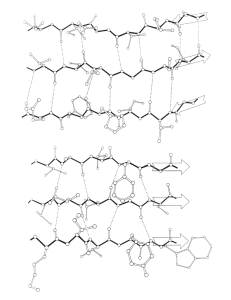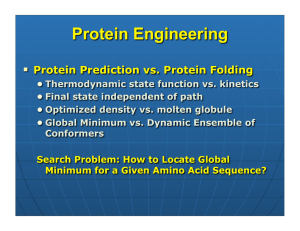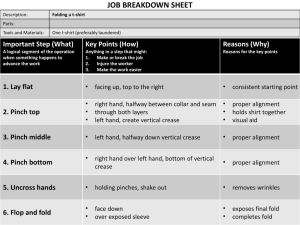Protein Structure Prediction & Design • Full Protein Structure from Sequence
advertisement

Protein Structure Prediction & Design • Full Protein Structure from Sequence - High Alignment (comparative modeling) - Low Alignment (fold recognition) - No Alignment (ab Initio) • Protein Engineering: Scaffold Design • Protein Engineering: Function Design Comparative Homology Modeling AGCTTCAG...CTGA ... query sequence TGCTACAG... Proteins evolve gradually Æ 3D structures and functions are often strongly conserved during this process. Strong sequence similarity often indicates strong structure similarity Æ Finding family members or similar sequences Scoring Matrix Æ Global -or- Target database Data Local Alignment From Alignment to Structure Copy aligned backbone from template Retain conserved side chains Predict new side chains and loops • • • No current comparative modeling method can recover from an incorrect alignment Use multiple sequence alignments as initial guide. Once a suitable template is found, it is a good idea to do a literature search (PubMed) on the relevant fold to determine what biological role(s) it plays • Hydrophobic residues exposed/Buried polar without charges balance • Very large RMSD among the templates • Different models give very different answers Fold Recognition Alignment Method (also called "Threading") Applied when we have < 20% alignment Used with a limited # of fold types Score the folds Pair-wise potential function Fold alignment using structural scoring matrix Rosetta Method for ab initio Modeling Creative ways to memorize sequence: structure correlations in short segments from the PDB, and use these to model new structures. ROSETTA Method. 1. Break target into fragments of 9 (25) and 3 (200) amino acids Æ Using MSA profile and predicted secondary structure 2. (from totally extent) Insert 9 mers from database. Metropolis Monte Carlo for 2000 steps (steric clashes criteria) 3. 2000 more steps with residue-residue scores : hydrophobic burial and specific pair interactions and secondary structure packing scores. 4. 10 iterations 2000 steps during which the local strandpairing score is cycled on and off to promote formation of nonlocal -strand pairing over local strand kinetic traps, whereas the local atom density is pushed toward that of native protein structures 5. 4000 3-mer fragment insertions; a term linear in the The final decoy is stored only if it passes radius of gyration is added to help condense the model several filters. Between 10,000 and 400,000 and a higher resolution model of strand pairing is used independent simulations starting from different random number seeds Rosetta Uses a Fragment Library + Monte Carlo Search Examples of the best-center cluster found by Rosetta for some test proteins. In many cases the overall fold is predicted well enough to be recognizable. However, relative positions of the secondary structure elements are almost always shifted somewhat from their correct values.



